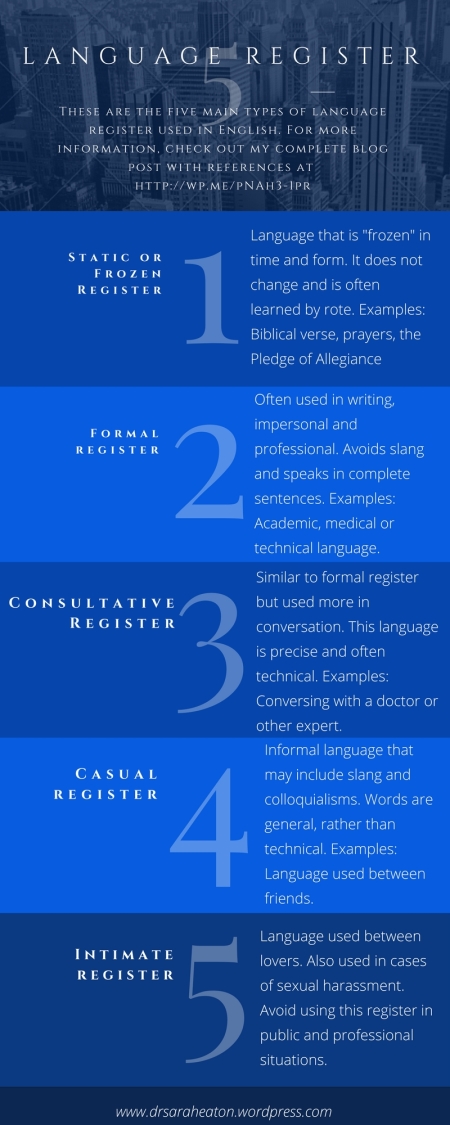A few years ago I wrote a post on language register. It has become one of the most popular and often viewed posts on my blog. It is a long and fairly involved post, so for those who like their information in bite-sized pieces, here is a quick synopsis for you in the form of an infographic:

It is important to understand the differences between registers so you can use language that is appropriate for a particular situation. If your register is too high, you may come across as being snobby, pretentious or arrogant. If your register is too low, you can come across as being inappropriately informal or too friendly.
It is not only English language learners who need to understand the difference between registers, but native speakers do too. One of the things I have observed in my work as a professor is that students sometimes write in a register that is too casual. Sometimes students do this because they do not want to come across as “stuffy” or pretentious. But casual writing in academic and professional papers can backfire. Writing that is overly casual is often not considered professional or terribly credible by the reader. It is important for students, professionals, scientists and academics to know the formal register for writing papers, theses and reports.
Here’s a free .pdf of this infographic that you can use for your own research or teaching purposes: Language Register (.pdf).
Check out these related posts:
Teaching formal and informal language register to native speakers of English http://wp.me/pNAh3-jV
Language Register and Why It Matters (Or: Why You Can’t Write An Academic Paper in Gangsta Slang) http://wp.me/pNAh3-1pr
______________________________________________________
Share or Tweet this: Understanding Language Register https://wp.me/pNAh3-25U
This blog has had over 1.8 million views thanks to readers like you. If you enjoyed this post, please “like” it or share it on social media. Thanks!
Sarah Elaine Eaton is a faculty member in the Werklund School of Education, University of Calgary, Canada.



You must be logged in to post a comment.